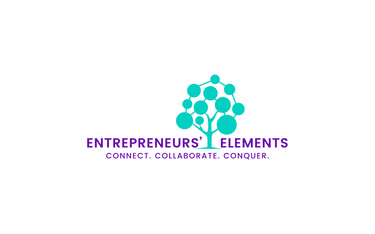Red Bull: From Drink to Billion-Dollar Brand
6/23/20253 min read
🎯 How It Started: From Thai Tonic to Global Icon
In the early 1980s, Austrian marketer Dietrich Mateschitz noticed something unusual while on a business trip to Thailand: local truck drivers and laborers swore by a syrupy tonic called Krating Daeng to stay awake and energized.
Where most would see a quirky local drink, Mateschitz saw global potential. He partnered with Krating Daeng’s creator, Chaleo Yoovidhya, and together they:
Adapted the formula for Western palates (carbonated, less sweet)
Positioned it not as medicine, but as a trendy, premium energy boost for young, active people
Co-founded Red Bull GmbH in 1984 with an equal stake — a true cross-cultural venture long before “global startups” were the norm.
On April 1, 1987, Red Bull officially launched in Austria — at a price nearly twice that of a regular soft drink, with an unfamiliar taste and an entirely new category: the energy drink. It was risky — but the founders didn’t just sell a beverage; they sold an attitude.
💡 Business Model: Not Just a Drink — A Cultural Phenomenon
Premium Pricing & Scarcity
Red Bull never competed on price. Instead, it positioned itself as a premium, must-have item for students, night owls, and athletes. That exclusivity fueled curiosity — making it aspirational.
Lifestyle Integration
Red Bull didn’t buy giant TV campaigns right away. Instead, it invested in student brand ambassadors handing out free samples at parties, libraries, and sporting events. This direct seeding turned campuses into breeding grounds for hype.
Own the Experience
Instead of sponsoring existing events, Red Bull created its own:
Red Bull Flugtag — where amateurs launch homemade flying machines off a pier.
Red Bull Air Race — a global spectacle of aerobatic pilots racing through obstacle courses.
Extreme sports sponsorships — from cliff diving to snowboarding.
Media Empire
Seeing early that brands could become publishers, Red Bull launched Red Bull Media House in 2007 — producing award-winning films, music, and live sports broadcasts. Today, they are a content juggernaut with millions of followers across YouTube, Instagram, and TikTok.
Global Reach
From one small office in Fuschl am See, Austria, Red Bull now sells in over 178 countries, holding 43% of the global energy drink market and up to 75% in some regions.
In 2024, they sold a record 12.7 billion cans, pulling in €11.2 billion in revenue, with nearly 20,000 employees worldwide.
⚡️ Marketing Mix: Turning Fans into Ambassadors
✅ Target Market: Youth aged 16–34: students, athletes, adrenaline junkies, partygoers.
✅ Message: “Red Bull gives you wings.” Not literally, but in the sense of fuel for late nights, big ideas, and bold moves.
✅ Channels:
On-campus sampling
Sponsorships (over 800+ events per year)
Owned media (Red Bull TV, documentaries)
Viral digital campaigns and influencer collabs.
This mix turned Red Bull from a weird new drink into the default companion for exams, gaming marathons, and extreme stunts alike.
🧩 Key Differentiators
✨ Experiential Branding: They don’t just sell energy — they sell stories of pushing limits.
✨ First Mover Advantage: They created the market — and invested massively to defend it.
✨ Reverse Innovation: A Thai product made global by adapting it carefully for local tastes.
✨ Controlled Expansion: While competitors diversified, Red Bull stayed focused on being the energy drink — avoiding risky dilution.
🏔️ Challenges & Weak Spots
Even iconic brands aren’t bulletproof:
Health Concerns: Energy drinks face scrutiny for sugar and caffeine content. Red Bull addresses this with Sugarfree and Total Zero, but the core reputation remains a debate.
Heavy Youth Dependence: It must continuously refresh its image to stay relevant with new generations.
Market Saturation: Growth in mature markets is slowing; future expansion lies in new regions and sub-categories.
Price Sensitivity: Competitors undercut with cheaper knock-offs.
These remind us that staying #1 is harder than becoming #1.
💼 Lessons for EE Entrepreneurs
🔥 1. Don’t Just Launch a Product — Launch a Movement.
People buy feelings, stories, and status more than they buy ingredients. Red Bull turned caffeine + taurine into a global culture.
🔥 2. Be Where Your Customers Play.
Red Bull didn’t expect customers to find them — they embedded themselves in music, sports, and nightlife scenes.
🔥 3. Own the Content.
By becoming a publisher, they control the brand narrative and reach audiences directly.
🔥 4. Innovate, But Don’t Lose Focus.
They resisted the temptation to become another soft drink giant. Their tight portfolio keeps their brand identity sharp.
🔥 5. Think Local + Global.
Red Bull tweaked taste, messaging, and campaigns for each market. One size never fits all.
🔥 6. Sustainability Isn’t Optional Anymore.
Today’s buyers care. Red Bull’s recyclable cans and clean energy sourcing align with evolving consumer values.
✅ Key Data Snapshot
Metric Value
Launch Year 1987
Countries Sold In 178+
2024 Cans Sold 12.7 billion
2024 Revenue €11.2 billion
Employees ~20,000
Market Share 43% globally
🔑 EE Takeaway
Red Bull isn’t just a drink in a can — it’s proof that ordinary products can win global markets if you sell an extraordinary experience.
